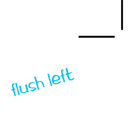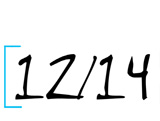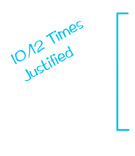| I am interested
in having my art work printed, do I need a certificate of authenticity?
|
| |
Some 14 states have laws requiring Certificates of Authenticity
(CoA) be provided to buyers of art; however: 1) There is
not uniformity between the states as to what information
is necessary. 2) The actual Certificates of Authenticity
are generated by the artist or gallery; they are not issued
by any governmental agency, nor are they approved by any
agency. Please see Certificate
of Authenticity.
|
| |
|
| Why should
I care about archival paper and ink for my prints? |
| |
Non-archival printing can see color shifts
in even a few months. Three things go into archival printing:
the quality of the paper support (acid and lignum free, preferably
100% cotton), light safe inks, and some kind of protective
environment (starting with a UV inhibiting coating, then either
safe storage or safe framing). If the colors fade away or
the paper yellows and becomes brittle, or if the image is
attacked by mold or insects, or simply gets dinged: it may
not matter if you saved a few dollars. See Wilhelm-Research.
|
| |
| If I have
my typeset and created as a PDF can it be changed? |
| |
PDF files can be edited if there is no security preventing
alterations. However, if the work was typeset in a program
like InDesign or Quark, it is easier and safer to make alteration
in those files and then recreating the PDF.
|
| |
| How do I
copyright my book? |
| |
Please look at Copyright.
Your work was automatically copyrighted upon its creation,
but it was not registered. Publishing your work with a copyright
notice offers additional protections and registering it provides
the best protection under the law. Currently the basic fee
is $35-45, and you can register on-line; or, you can submit
Form TX (Literary Works) or Form VA (Visual Art Work) by mail.
See US Copyright
Office Forms. |
| |
| Can I copyright
the title of my book? |
| |
Please look at Copyright:
"Titles, names, short phrases, and slogans; familiar
symbols or designs; mere variations of typographic ornamentation,
lettering, or coloring; mere listings of ingredients or
contents" are generally not eligible for copyright
protection—but do not name your book the Further
Adventures of Harry Potter.
|
| |
|
| If I register
my book myself how do I get a bar code? |
| |
Registering your book gives you a copyright
registration. The bar code, ISBN Bar Code, is a scanable code
that represents the ISBN (International Standard Book Number),
issued through Bowker.
To get a bar code for that number can run from free to around
a hundred dollars: Tux.org,
a free barcode
generator, Bowker
Bar Code Service (unless you trust where you got your
bar code, it is advised that you have it scanned by someone
to see that it is correct). |
| |
|
| I am interested
in using some art work that may be in public domain, but how
can I be sure? |
| |
Please look at Copyright.
Generally: 1) Unpublished: works of authors who died before
1938 (life of the author plus 70 years). 2) Unpublished anonymous,
pseudonymous, and works for hire created before 1888 (120
years from date of creation). 3) Published works before 1923.
4) Published in the US without copyright notice, created between
1923 and 1977. See Copyright
Duration or Copyright
Duration Table. There is a popular idea that you can use
a small part of copyrighted work, sort of like fair use or
musical sampling. A copyrighted visual work of art is fully
protected and you can't use any of it. |
| |
|
| Is there
a best type for books? |
| |
No, the type should suit the book. However,
there some general considerations: Serif type is much more
readable than sans serif type. Sans serif and display types
are fine for headings, and picture books where the text may
be minimal, but longer works should be set in fairly traditional
serif type. See Type,
also Wikibooks. |
| |
|
| Should
art work be printed on different paper from the text? |
| |
Generally, in offset printing various
factors (dot gain, reflectivity, opacity, etc) art work is
printed on coated paper. For popular magazines, all the pages
are coated. For art books, especially published before say
1970 (an arbitrary date) it was not uncommon for the art to
be printed on coated paper and either tipped in (see tipped
in or wrap
around) to uncoated paper. Since then, most art books
are printed on coated paper throughout, text and images. |
| |
|
| Should the
art be grouped in separate a signature? |
| |
See (above). Sometimes,
especially with B&W printing, the images print better
on coated paper, but there are not that many pages, so it
is fairly common to group the art into one or more signatures.:
the costs are kept low, but the quality is better. |
| |
|
| Will you
publish my book? |
| |
I grew up watching Bennett Cerf (co-founder
of Random House) on What's My Line?, both of my parents
wrote, my mother won the Polk Award in 1974, and my family
counted a number of well known authors and editors as friends.
If your book were good, I'd would love to, but publishing,
which should involve marketing and advertising, is an expense
and commitment in time that I cannot give, and you would be
disappointed. I have published books, in the sense of getting
them into print, and I will again, but I do not represent
myself as a publisher. Writers are too often prey to every
scam under the sun, I won't contribute, even if unintentionally.
|
| |
|
| Do you
do any editing? |
| |
I have. It is exhausting and daunting
to edit someone else's work. I believe that editing is a collaborative
process, which works best if at the end of the day author
and editor can share a single malt. If you think about the
process and what would make it work best, it cannot be done
for a fixed fee of $500 unless all you really want is to have
the spelling checked and get a few glib comments like, "I
liked the sentence, '. . .' and your plot development moved
quickly, carrying me straight to the denouement. I couldn't
put it down." |
| |
|
| I've seen
your collage work, can you explain how you do it? |
| |
I've was asked to write a non-technical
article about making digital collage. I've posted on this
site, click here. |
| |
|
| |
|
| Let me design your book. Prescott
is an email away—contact!
|








